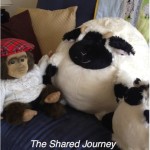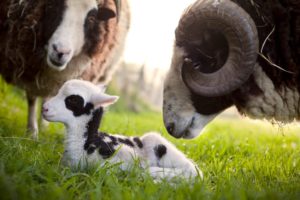Happy Wednesday Dear TSJ Friends,
I am re-learning about the usefulness and power of story. You may ask, “why?”
 Stories are valuable as teaching and learning tools. because stories can be repeated and we hear them differently each time – from different ages and stages of life’s journey.
Stories are valuable as teaching and learning tools. because stories can be repeated and we hear them differently each time – from different ages and stages of life’s journey.
Last week I introduced a possible “Then and Now” series of stories … and started with Mom’s Tattered Dresses.
Today, however, I have a story with a fun task I learned in grad school that I encourage you to try. You may be able to see for yourself how our earliest memories can foreshadow our future selves. We looked at our earliest memories from a “then and now” perspective.
WHAT’ S IN A MEMORY?
Many years ago when I started graduate training in school psychology – not unlike other young parents – I was struggling through emotional and circumstantial hurdles. Even our old car was unreliable, especially for night driving in the country with no service stations for miles. Sometimes I had to borrow a car because ours was in bad shape. Fortunately, I often got a ride with others and this particular night I was with a friend.
And my friend and I had a well oiled “shared journey” friendship! Trust was (and still is) strong between us. After we slipped into our seats and listened to the lecture we each had an unforgettable experience, an ah-hah experience we ended up talking about on our way home that night.
The class was about Patterns of Emotional Adjustment. In other words, a course about abnormal psychology. And while we had many other exercises this one is most memorable. It gave most of us a new understanding of ourselves and our unconscious patterns of behavior. And our professor was a masterful teacher on this topic.
Instructions:
Dr. Psychologist began with an interesting pre-exercise talk on the importance of childhood memories in teaching us about our adult selves. He had us clear our desks except for a piece of paper and writing implement. For me this is always a trigger for anxiety!
Dr. P said, “I want you to take a few moments and dig back into your childhood memories and write down your earliest childhood memory.”
We were given some leeway. No rules about how early except – as early as possible. And we could jot down two or three memories if we needed. We were left to work quietly on our own for only a few minutes. Here is the one I did.
My Earliest Childhood Memory
Our kitchen was always bright and airy and the primary meeting place of our old farmhouse. At the time of this memory I was at least three years old and my older brother was about five. As I remember, I was being confined to a high chair in the kitchen for stretches of time. (I was always a high energy kid and had trouble even sitting still in church.)
We lived in a lovely old house with many rooms that were framed in beautiful wood work. From the kitchen you could see through to the dining room and on into the sitting room. On that day the rooms were rather dark as the shades were pulled and my brother was sick.
I was sitting in the high chair rather unhappy, feeling very confined. One of my parents’ church friends stopped by. I remember her chatting with my mother for a bit and then coming over to my high chair and speaking to me as adults do to little kids. She seemed very sympathetic, kind and concerned about me staying in the high chair. She spoke to my mother and my mother let me get out.
My mother explained my brother was confined to the rest of the house where they could pull shades and shield his eyes from hurting due to measles.
I felt so cared about by this warm lady friend that I never forgot it and eventually she became my sixth grade Sunday School teacher and one day made my wedding dress for me!
Reflection Time
When our exercise was finished we were asked to form small groups and share what we learned.
Dr. P. probed . . . “out of all of the thousands of memories you have why do you think this is the one you can recall?” Hmm…good question! He urged us to dig deep and reflect. “How is the you-in-that memory similar to the you-of-today?”
Then and Now:
Dr. P. helped me see that my three year old self, when unhappy or confined responded to a loving helper/friend. He reminded me that a sign of resilience is the ability to accept from and give love to others.
And at the time I did this memory exercise, my adult self was feeling confined or trapped in a tough period in my life and my friend was like the family friend when I was three.
I lack words to share with you just how stunningly revealing were other’s experience as we heard in their discussion time. My story was simpler but powerful for me. Both my friend and I remember our experience fondly to this day – over thirty years later.
Try the exercise! What is in your story? I would love to hear from you at marg.m.cole@gmail.com!
Love and Gratitude . . . Margie and Solomon
Solomon has a “message-to-go” for us.
“All sheep have stories. And remember the saying in Ms. Margie’s office . . .
‘This same God who made the stars knows your name, knows your stories, knows your heart’ Your stories are important to our Chief Shepherd.”
